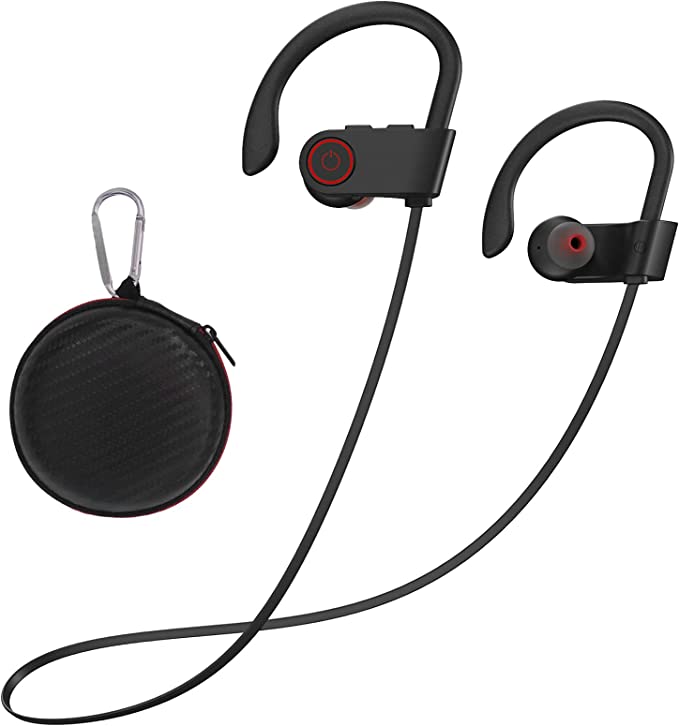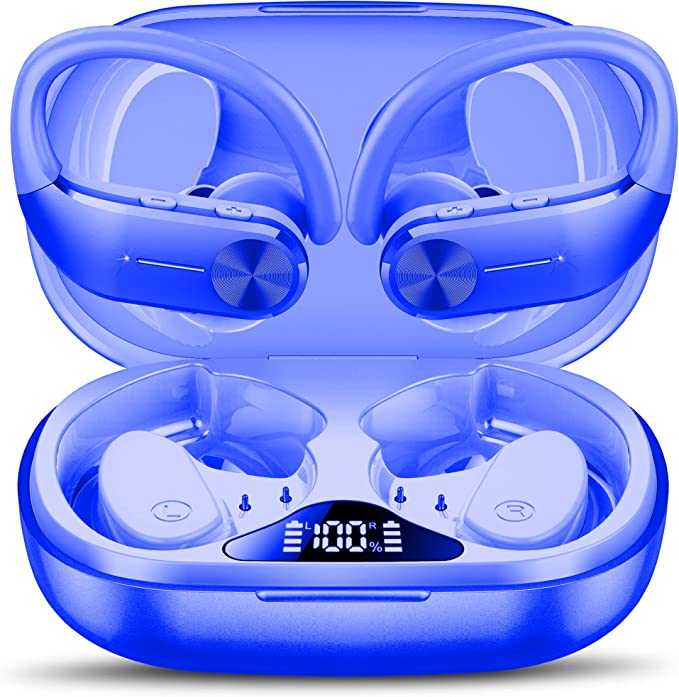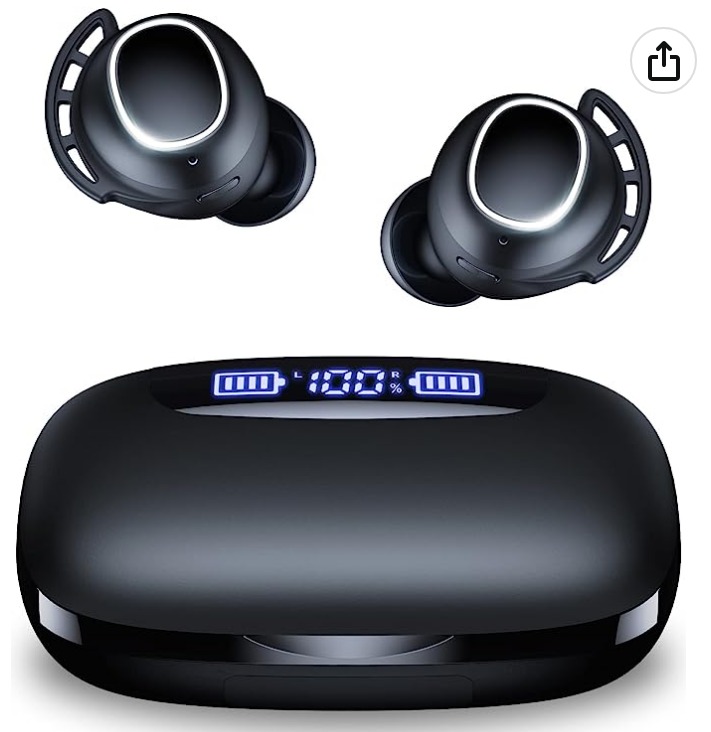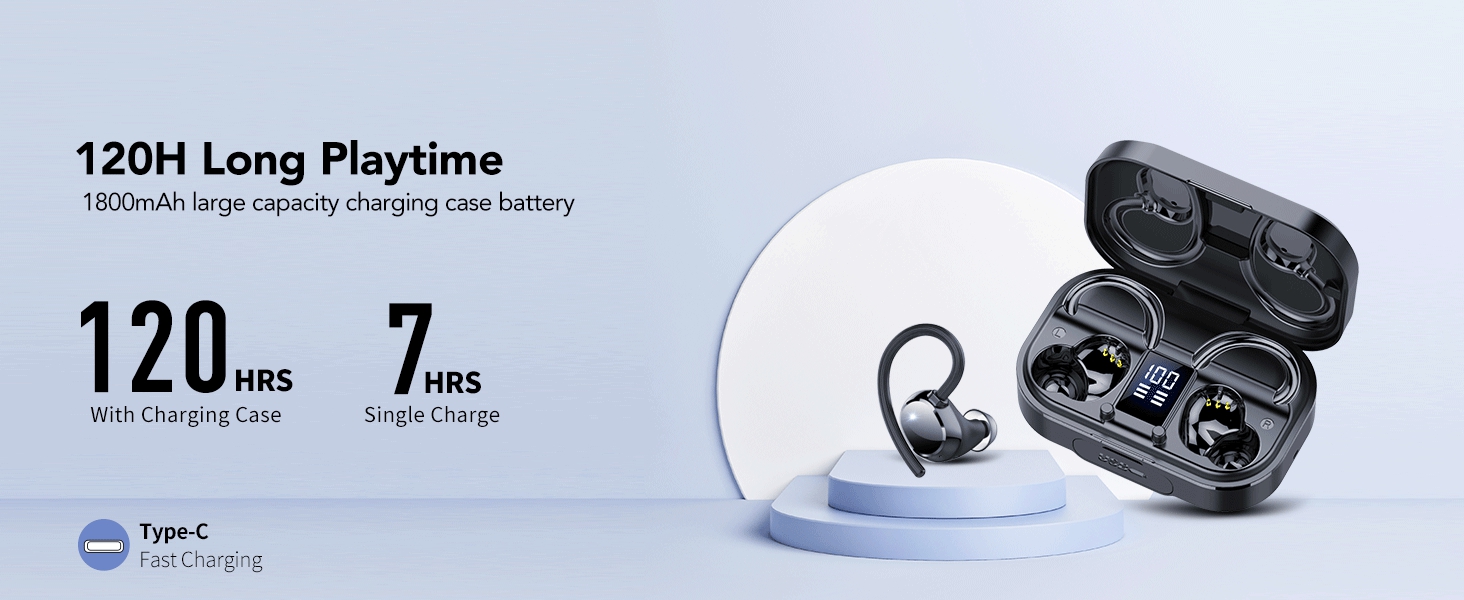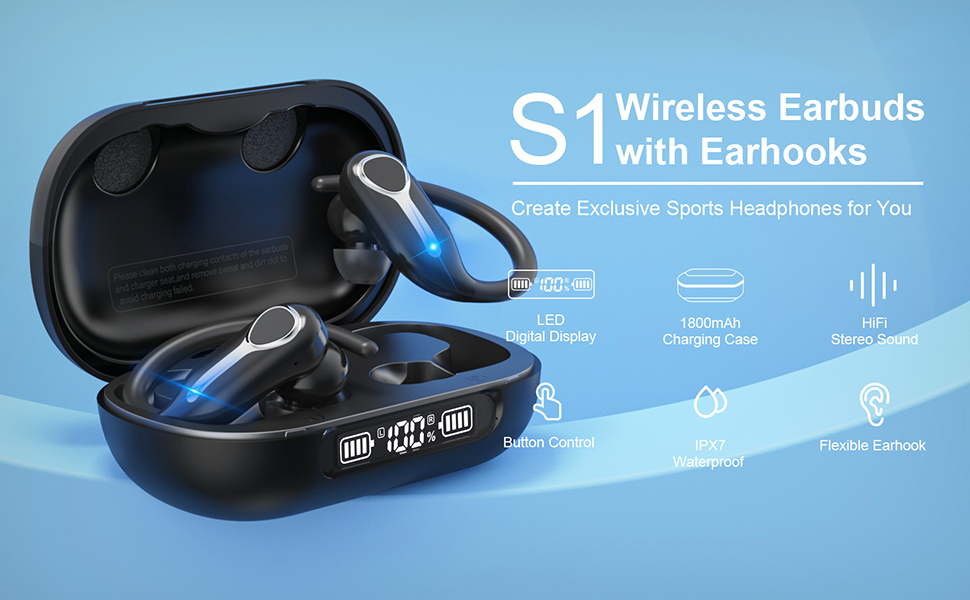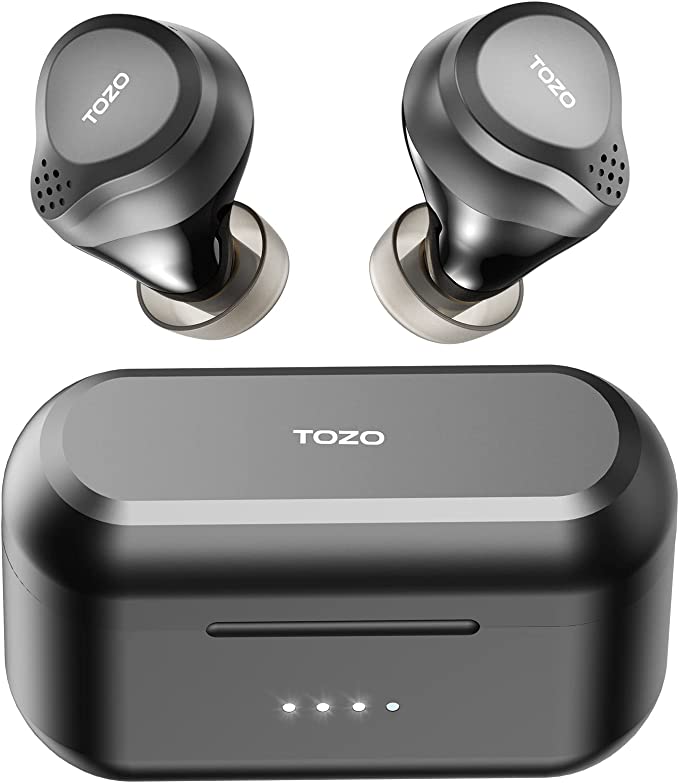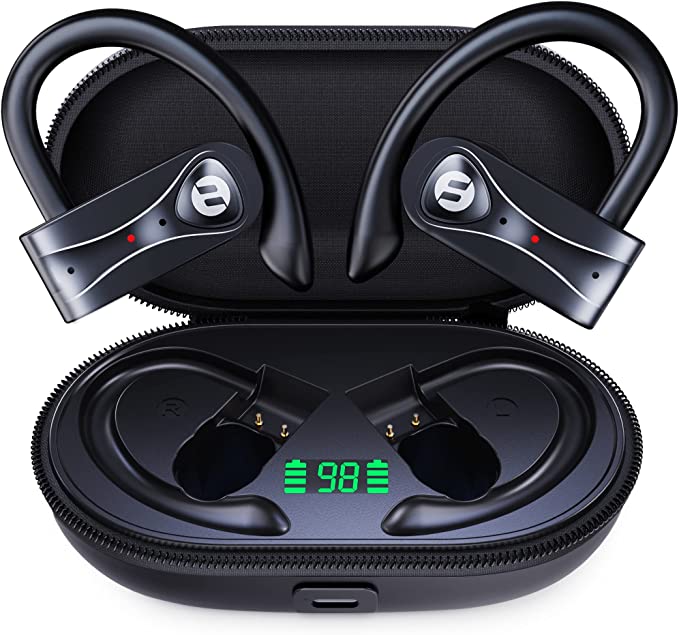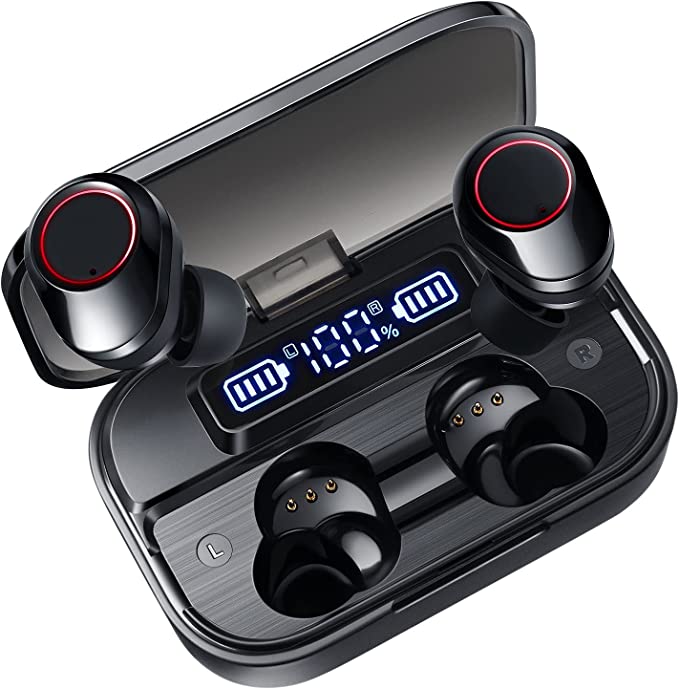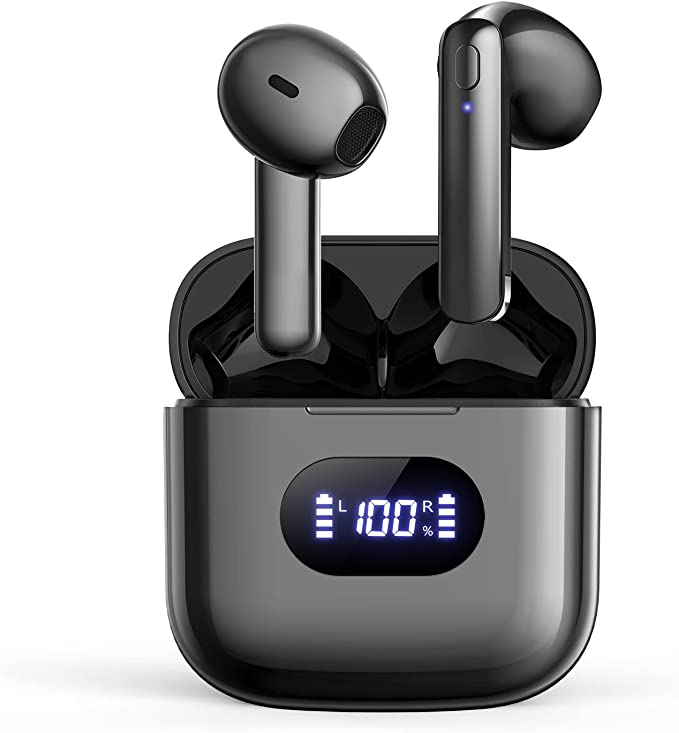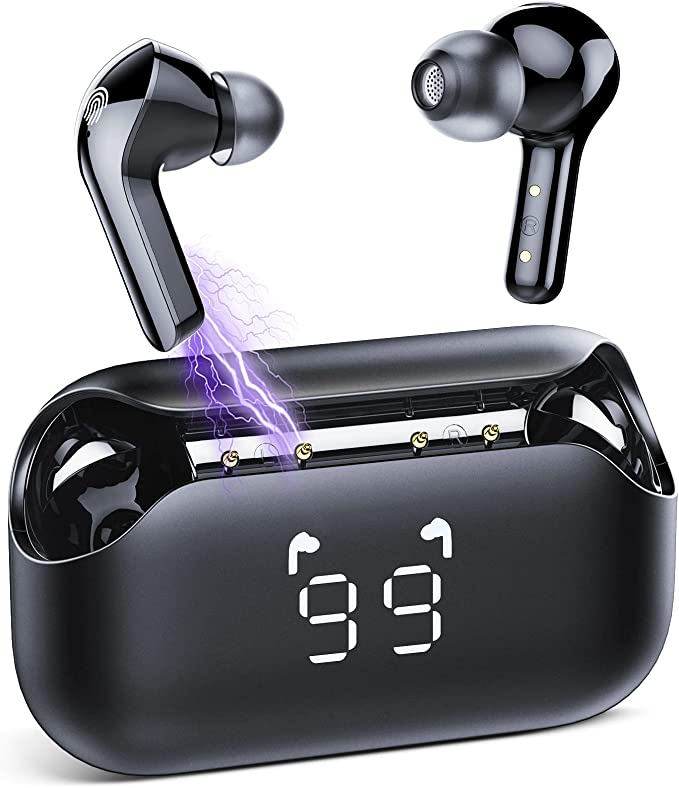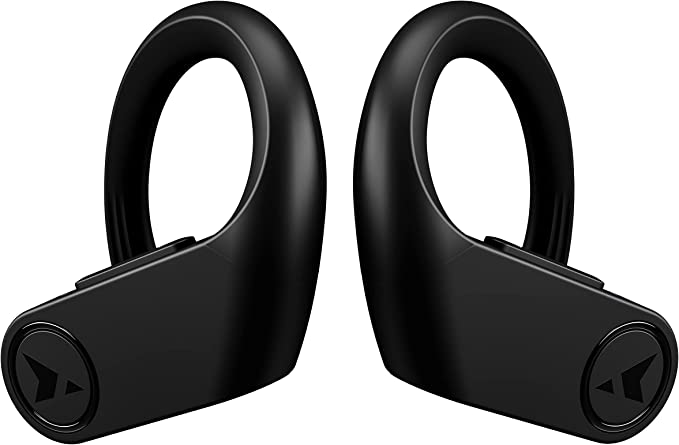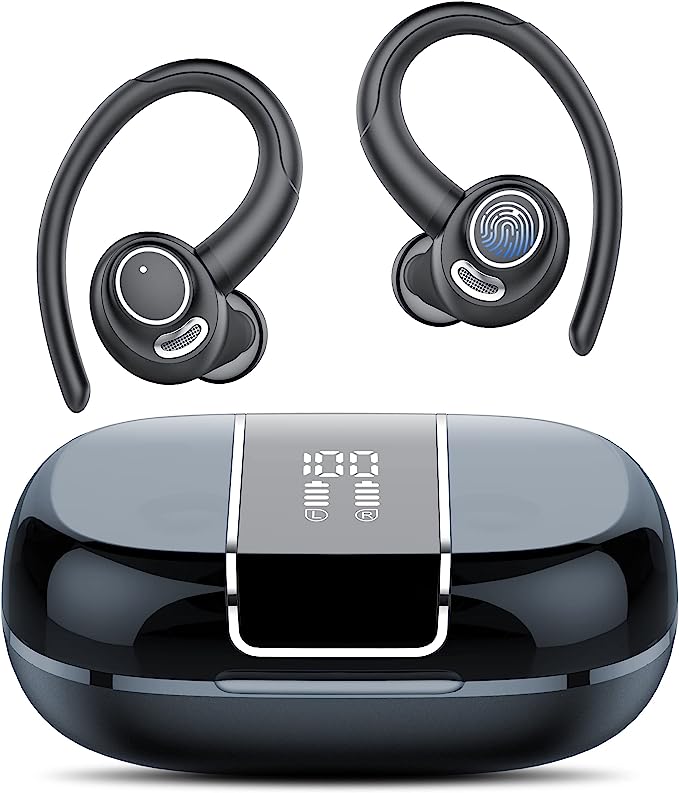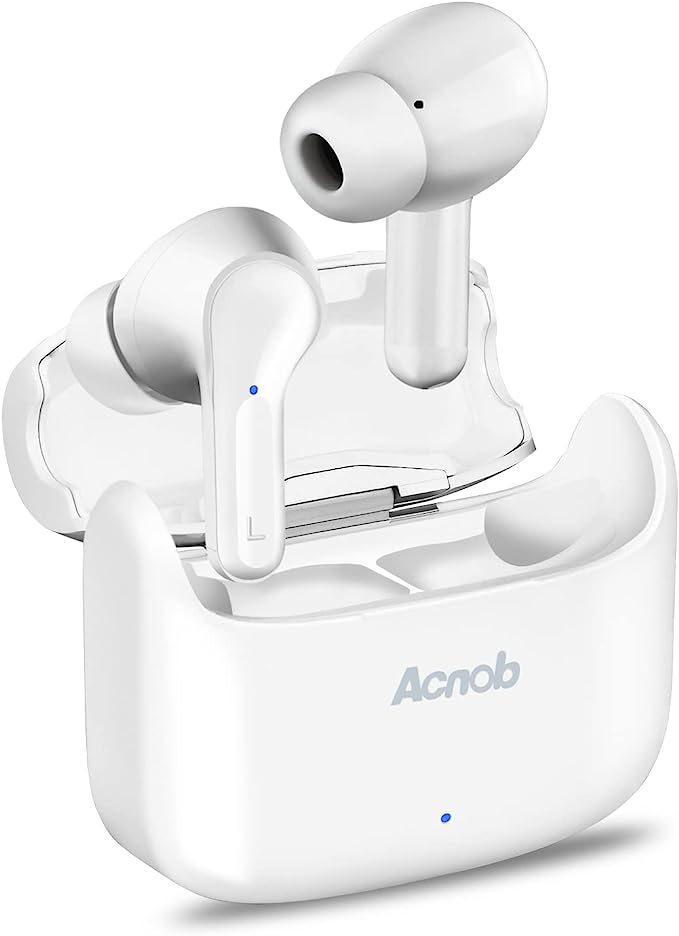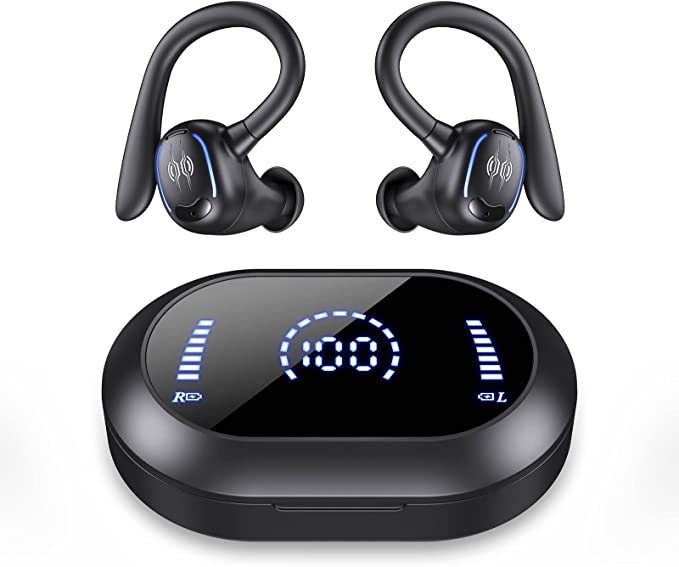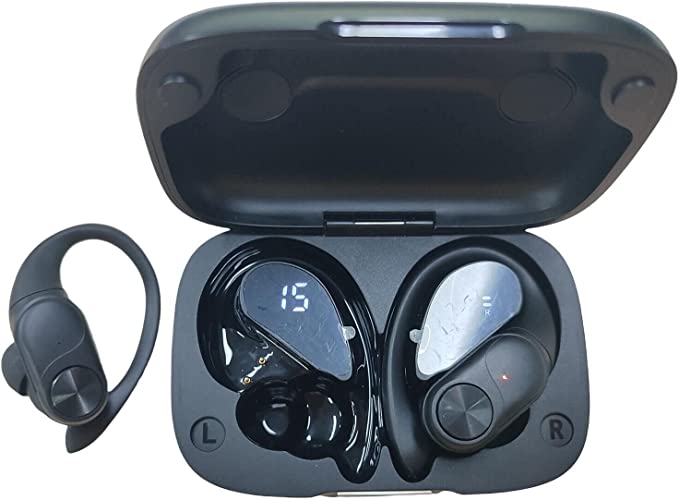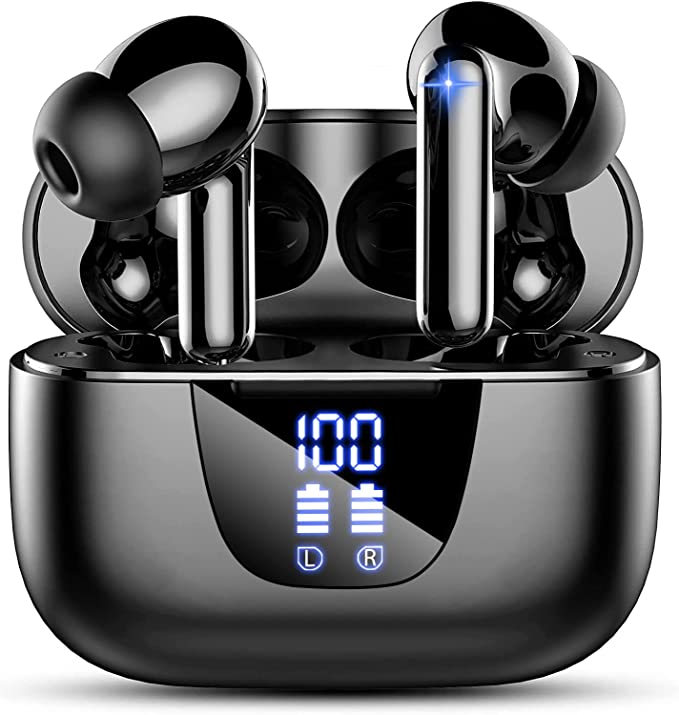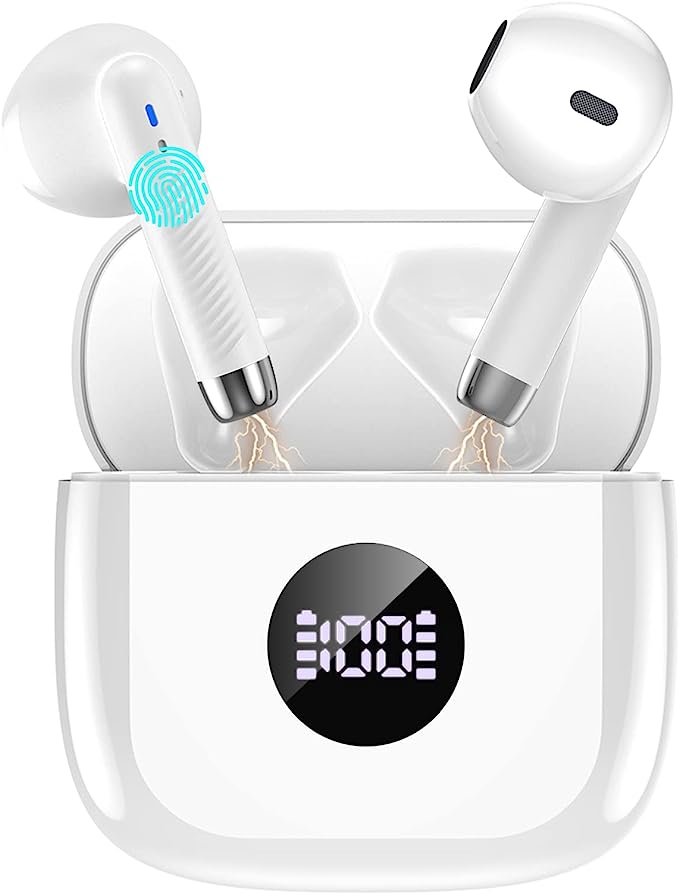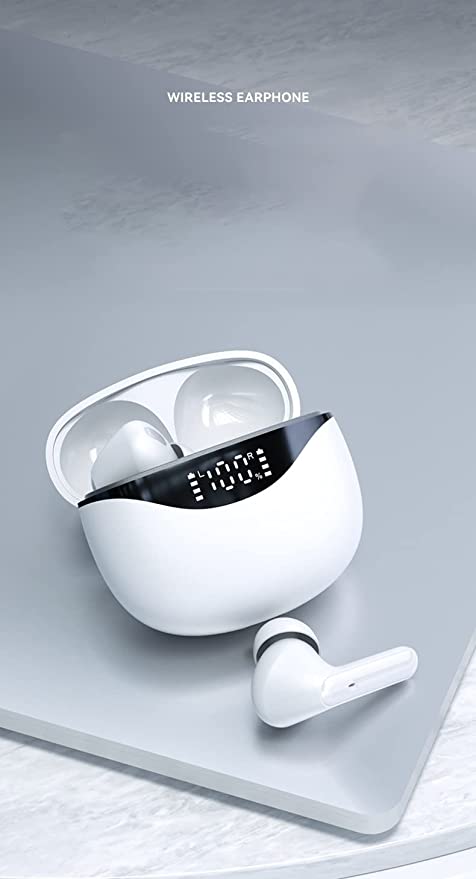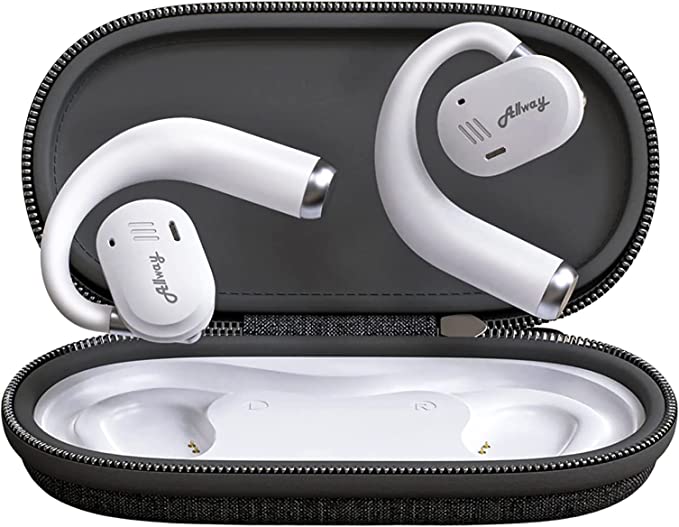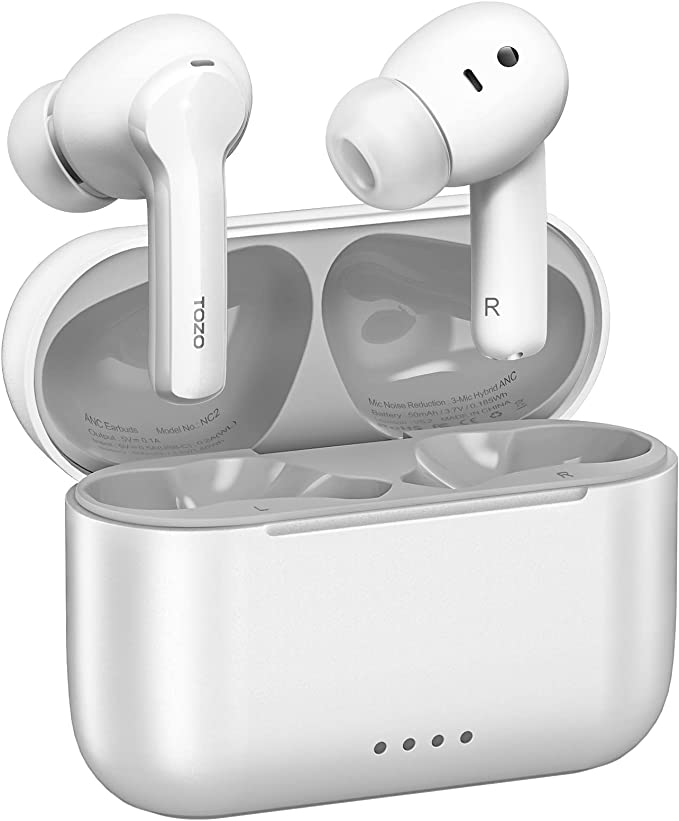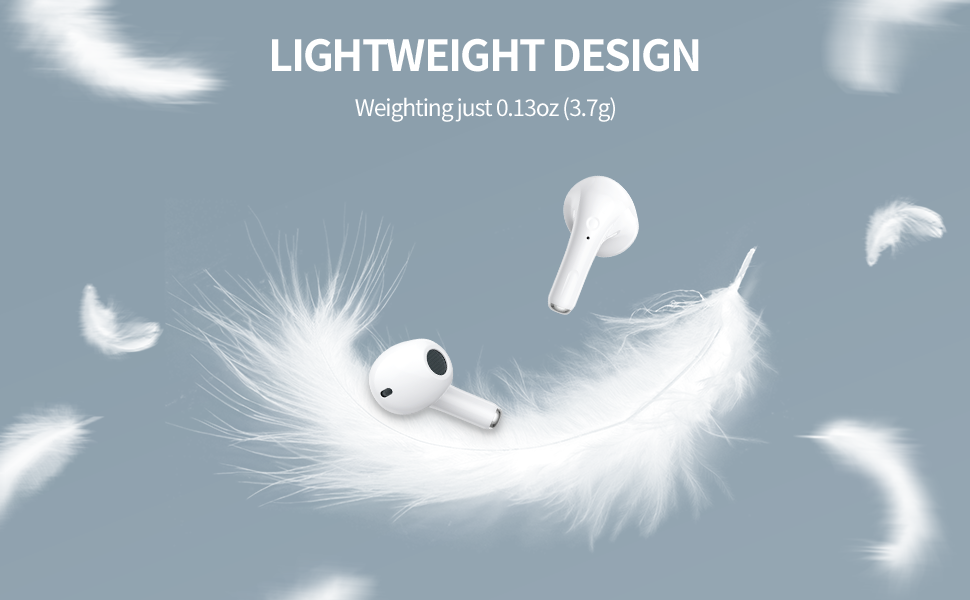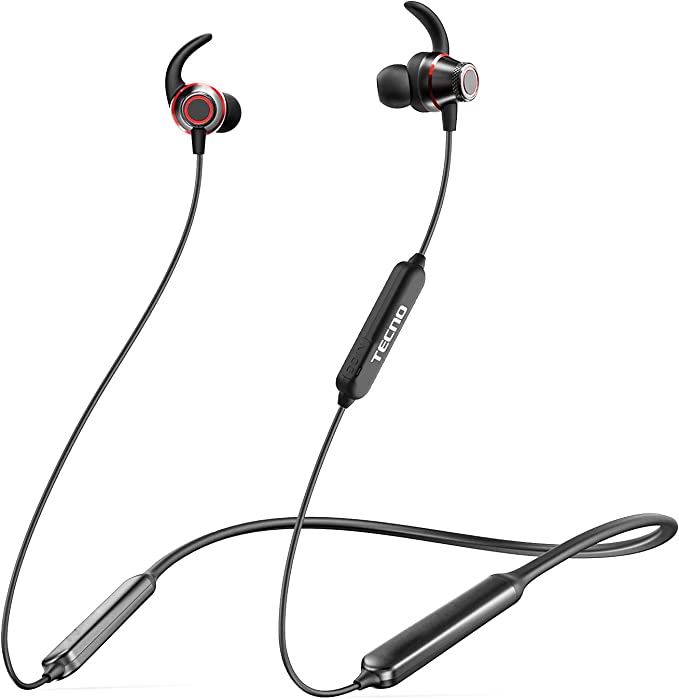TOZO T10 Wireless Earbuds: Immersive Sound & IPX8 Waterproof for Your Active Life
Update on March 8, 2025, 4:38 a.m.
For centuries, we’ve been captivated by sound. From the earliest musical instruments to the modern marvels of digital audio, our quest to capture, reproduce, and enjoy sound has driven innovation. Today, that innovation has culminated in the era of wireless earbuds, liberating us from the tyranny of tangled cords and offering unprecedented freedom of movement. The TOZO T10 wireless earbuds exemplify this evolution, packing impressive technology into a remarkably compact package. But these aren’t just about convenience; they’re a testament to the power of engineering and the fascinating science of sound.
The Problem with Wires, is not just inconvenience. Beyond the frustration of knots and snags, wired headphones create a physical tether to your device. This limits mobility, especially during activities like exercise, and can even pose a safety hazard in certain situations. Wired connections, while reliable in controlled environments, are also susceptible to wear and tear, leading to signal degradation and eventual failure. The constant bending and flexing of the cable can damage the internal wires, resulting in intermittent sound or complete loss of connection.
Enter the TOZO T10: a solution designed to address these limitations. These earbuds offer a seamless wireless experience, combining robust waterproofing, advanced Bluetooth connectivity, and carefully engineered acoustics. But how do they achieve this? Let’s delve into the science behind each of these key features.
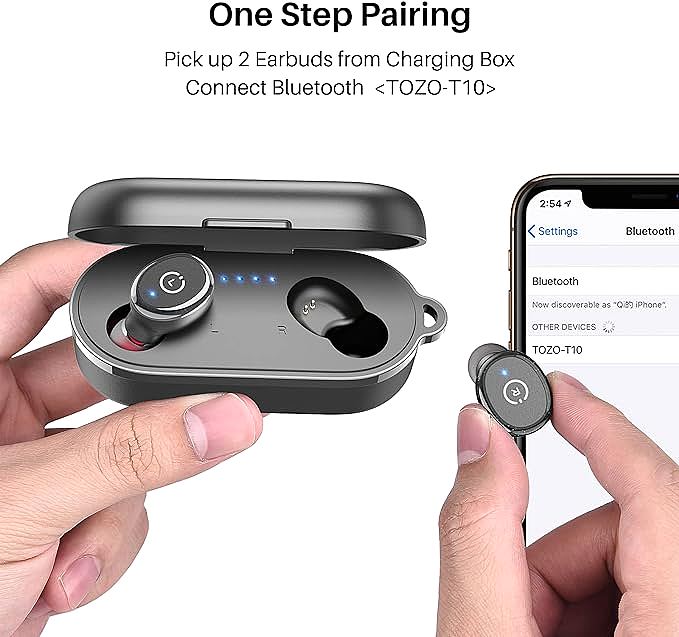
Diving Deep into IPX8: What Does It Really Mean to Be Waterproof?
The “IPX8” rating is often touted, but rarely understood. It’s part of the International Protection (IP) Code, a system established by the International Electrotechnical Commission (IEC) to classify the degree of protection provided by enclosures for electrical equipment. The “X” in IPX8 indicates that the device hasn’t been formally tested for dust protection, while the “8” signifies its ability to withstand immersion in water.
Specifically, IPX8 means the TOZO T10 earbuds can survive continuous immersion in water beyond 1 meter, under conditions specified by the manufacturer. In TOZO’s case, this is 1 meter for 30 minutes. This isn’t just splash resistance; it’s true waterproofing. But how is this achieved?
The answer lies in a combination of physical seals and, crucially, nano-coatings. These microscopic coatings, often applied using vapor deposition techniques, create a hydrophobic (water-repelling) layer on the internal components of the earbuds. Think of it like a microscopic raincoat for the electronics. The water molecules, due to their surface tension, prefer to stick to each other rather than to the coated surface. This causes the water to bead up and roll off, preventing it from penetrating the sensitive circuitry.
Real-world scenarios? Imagine swimming laps while listening to your favorite podcast, taking a shower without missing a beat of your audiobook, or getting caught in a torrential downpour without worrying about your earbuds. IPX8 provides that peace of mind. It’s important to note, however, that while the earbuds are waterproof, the charging case typically is not. Always check the manufacturer’s specifications for the case.
The Magic of Bluetooth 5.3: Stability, Efficiency, and the Future
Bluetooth, the ubiquitous wireless communication technology, has undergone a remarkable evolution since its inception. The TOZO T10 utilizes Bluetooth 5.3, the latest iteration, bringing significant improvements over its predecessors.
A brief history: Bluetooth was developed in the late 1990s as a way to replace cables for short-range communication between devices. Early versions were plagued by connection issues, high power consumption, and limited bandwidth. Over the years, each new version has addressed these shortcomings, leading to the robust and efficient technology we have today.
Bluetooth 5.3 builds upon the advancements of previous versions, focusing primarily on enhancing connection stability, reducing power consumption, and improving the overall user experience. While a detailed technical analysis is beyond the scope of this article, some key improvements include:
- Connection Subrating: This feature allows devices to quickly filter out unnecessary connection requests, reducing interference and improving stability, especially in crowded environments with many Bluetooth devices.
- Enhanced Connection Control: Bluetooth 5.3 optimizes the way devices negotiate connection parameters, leading to faster connection times and reduced power consumption.
- Channel Classification Enhancement: This allows devices to better identify and avoid interference from other wireless sources, further enhancing connection reliability.
These improvements translate to a more seamless listening experience with fewer dropouts, longer battery life, and lower latency (the delay between audio transmission and reception). Low latency is particularly crucial for video streaming and gaming, where even slight delays can be disruptive.
Looking ahead, the next major evolution in Bluetooth audio is LE Audio (Low Energy Audio). While it’s not confirmed whether the TOZO T10 supports LE Audio, it’s worth understanding its potential. LE Audio utilizes a new codec, LC3 (Low Complexity Communication Codec), which promises to deliver higher audio quality at lower bitrates than the traditional SBC codec. This means better sound and longer battery life. LE Audio also introduces features like multi-stream audio (allowing multiple devices to connect to a single source) and broadcast audio (allowing a single source to broadcast to multiple listeners).
ORIGX Acoustic Technology: Unpacking the Sound
The TOZO T10 boasts “ORIGX Acoustic Technology,” but what does that actually mean? While TOZO provides limited specific information, we can infer its likely components based on established acoustic principles and common practices in earbud design.
The fundamentals of sound: Sound is created by vibrations that travel through a medium (like air) as waves. These waves are characterized by their frequency (the number of vibrations per second, perceived as pitch) and amplitude (the intensity of the vibrations, perceived as loudness). Timbre, the quality that distinguishes different sounds (e.g., a flute versus a trumpet), is determined by the complex combination of frequencies present in the sound wave.
How headphones produce sound: Earbuds, like all headphones, use miniature speakers called drivers. These drivers typically consist of a diaphragm (a thin membrane), a voice coil (a coil of wire), and a magnet. When an electrical signal representing the audio is passed through the voice coil, it creates a magnetic field that interacts with the magnet, causing the diaphragm to vibrate. These vibrations create sound waves that travel to our ears.
The role of digital signal processing (DSP): DSP is a crucial component of modern audio devices. It involves using a specialized processor to manipulate the audio signal digitally. DSP can be used to equalize the sound (adjusting the levels of different frequencies), reduce noise, enhance bass, and create various audio effects.
What We Know, and What We Can Infer, about ORIGX: TOZO states that ORIGX 2.0 optimizes vocals and the midrange. This suggests several possible design elements:
-
Driver Tuning: The 8.0mm driver is relatively large for an earbud, allowing for greater air movement and potentially stronger bass response. ORIGX likely involves careful tuning of the driver’s frequency response, emphasizing the midrange frequencies where vocals typically reside. This could involve adjusting the diaphragm’s material, stiffness, and shape.
-
Acoustic Chamber Design: The internal shape and volume of the earbud’s housing (the acoustic chamber) play a crucial role in shaping the sound. ORIGX likely incorporates a carefully designed chamber that minimizes unwanted resonances and optimizes the flow of sound waves.
-
DSP Equalization: It’s highly probable that ORIGX includes a custom DSP profile that further enhances vocal clarity and midrange presence. This could involve boosting certain frequencies and attenuating others to create a balanced and pleasing sound signature.
-
Material Selection: The specific choice of materials used in the construction, is also a key part of ORIGX.
While the exact details of ORIGX remain proprietary, it’s clear that it represents a holistic approach to sound optimization, combining driver design, acoustic chamber engineering, and digital signal processing.

The Ergonomics of Sound: Comfort and Fit
Sound quality isn’t just about the internal components; it’s also about how the earbuds interact with your ears. A poor fit can lead to discomfort, sound leakage, and a diminished listening experience. The TOZO T10 addresses this with its ergonomic design and multiple eartip sizes (XS/S/M/L/XL/XXL).
Why a good seal matters: Passive noise isolation. Unlike active noise cancellation, which uses microphones and electronic processing to counteract external sounds, passive noise isolation relies on physically blocking sound waves from entering the ear canal. A tight seal created by the eartips is essential for effective passive isolation. This not only reduces ambient noise but also improves bass response and overall sound clarity.
Choosing the right eartips: Experimenting with the different sizes is crucial to find the best fit for your ears. The ideal eartip should create a comfortable seal without feeling too tight or causing pressure. A proper seal will maximize both comfort and sound quality.

Wireless Charging: A Convenient Cut of the Cord
While the TOZO T10 charges via USB-C, it also supports wireless charging, adding another layer of convenience. This seemingly magical technology is based on the principle of electromagnetic induction.
The principles of electromagnetic induction: When an alternating current (AC) flows through a coil of wire, it generates a fluctuating magnetic field. If another coil of wire is placed within this magnetic field, a voltage is induced in the second coil, causing current to flow. This is the fundamental principle behind wireless charging.
Qi wireless charging standard: The TOZO T10 likely uses the Qi (pronounced “chee”) wireless charging standard, the most widely adopted standard in the industry. Qi-compatible charging pads contain a transmitting coil that generates the magnetic field. The charging case of the TOZO T10 contains a receiving coil that converts the magnetic field back into electrical energy, charging the battery.

Conclusion: Summarizing the Science and Benefits of the TOZO T10
The TOZO T10 wireless earbuds are more than just a convenient way to listen to music; they’re a showcase of applied science. From the intricate physics of sound reproduction to the clever engineering of IPX8 waterproofing and the advanced communication protocols of Bluetooth 5.3, these earbuds represent a significant step forward in personal audio technology. By understanding the science behind these features, we can appreciate the ingenuity and innovation that make the TOZO T10 a compelling choice for anyone seeking a high-quality, durable, and truly wireless listening experience. They offer a blend of features often found in much more expensive earbuds, making them a remarkable value. They’re a testament to how far wireless audio has come, and a glimpse into the exciting future of sound.
- IEC 60529: Degrees of protection provided by enclosures (IP Code).
- Bluetooth SIG: https://www.bluetooth.com/
- SoundGuys: https://www.soundguys.com/
- Rtings: https://www.rtings.com/
